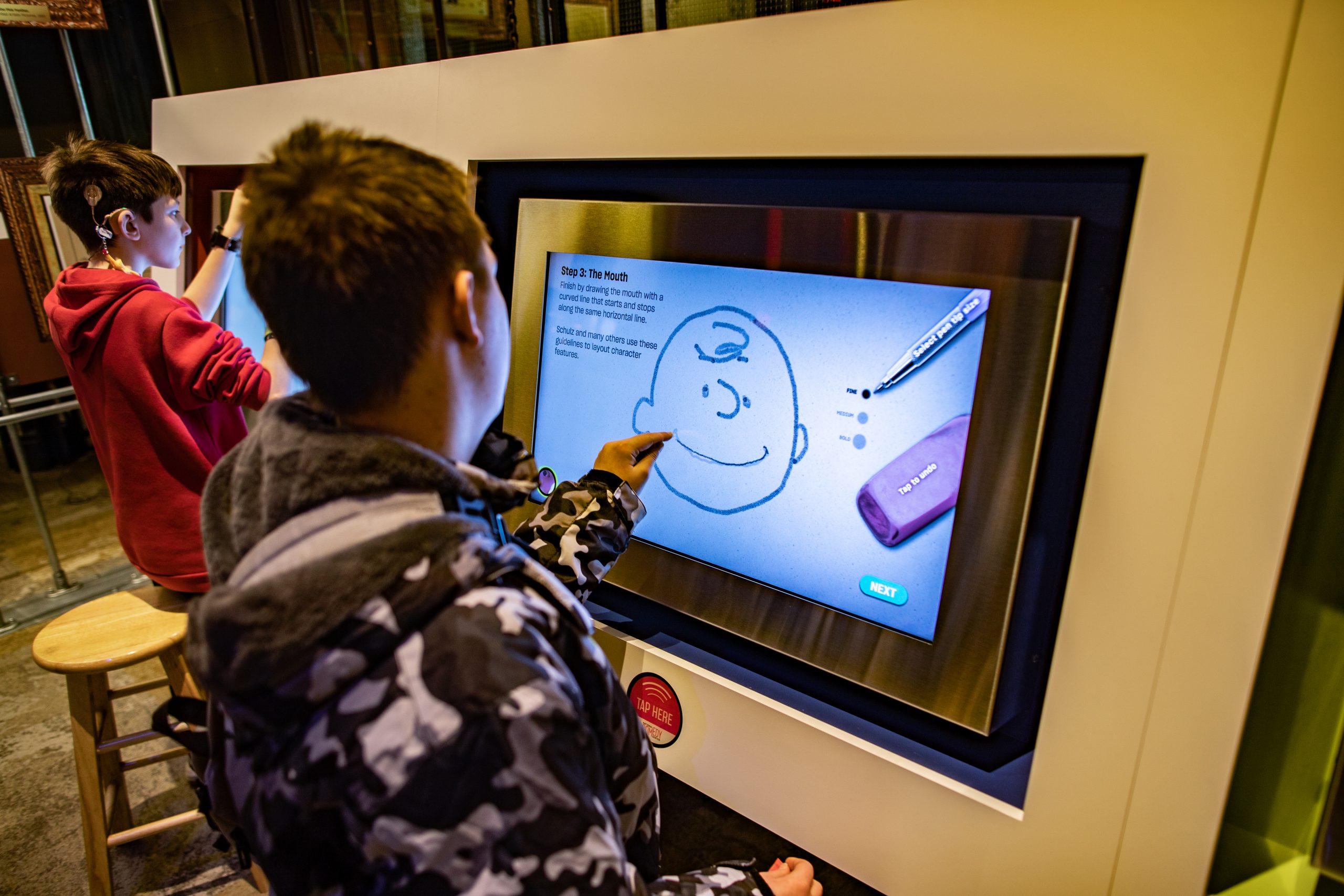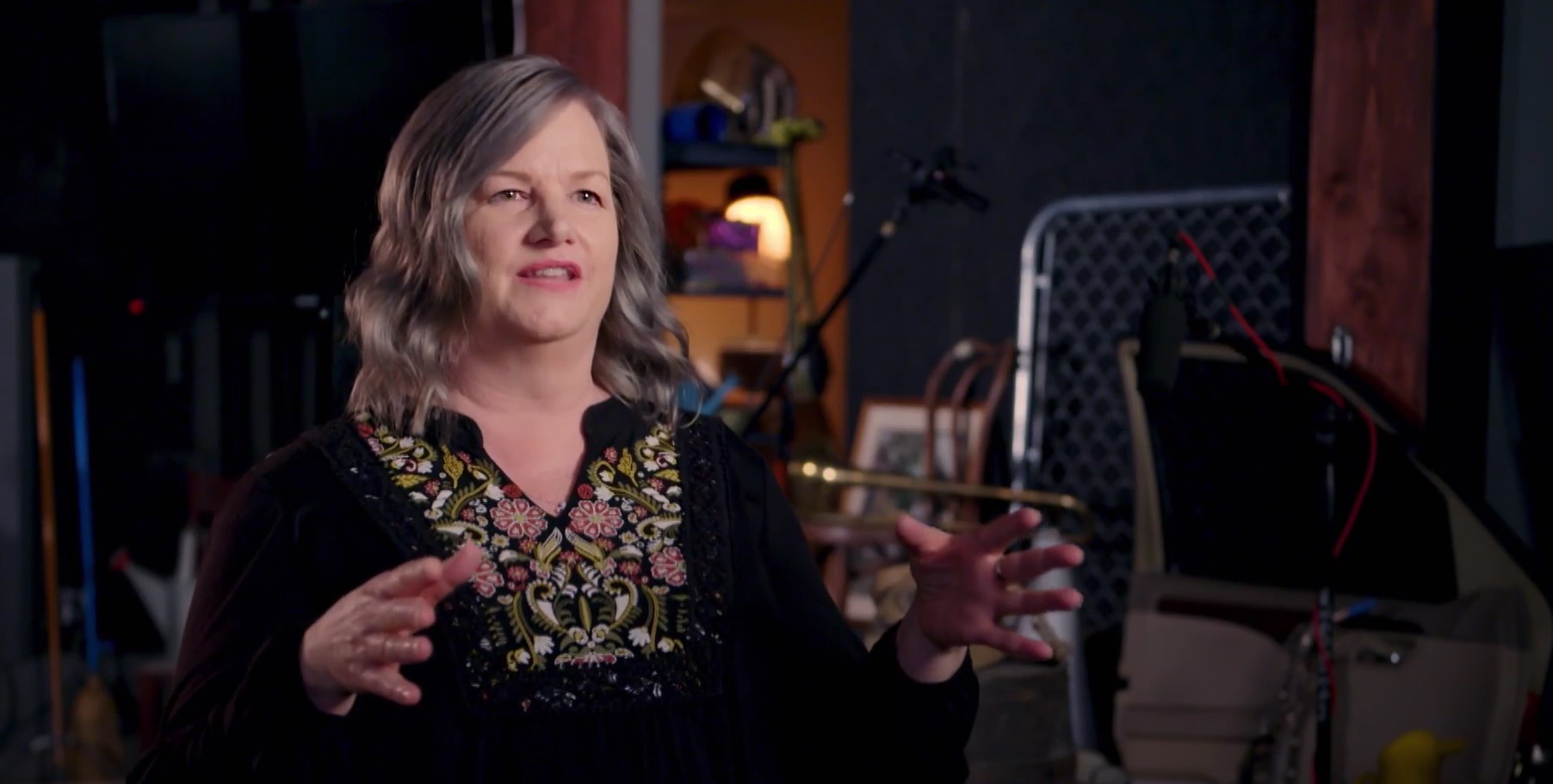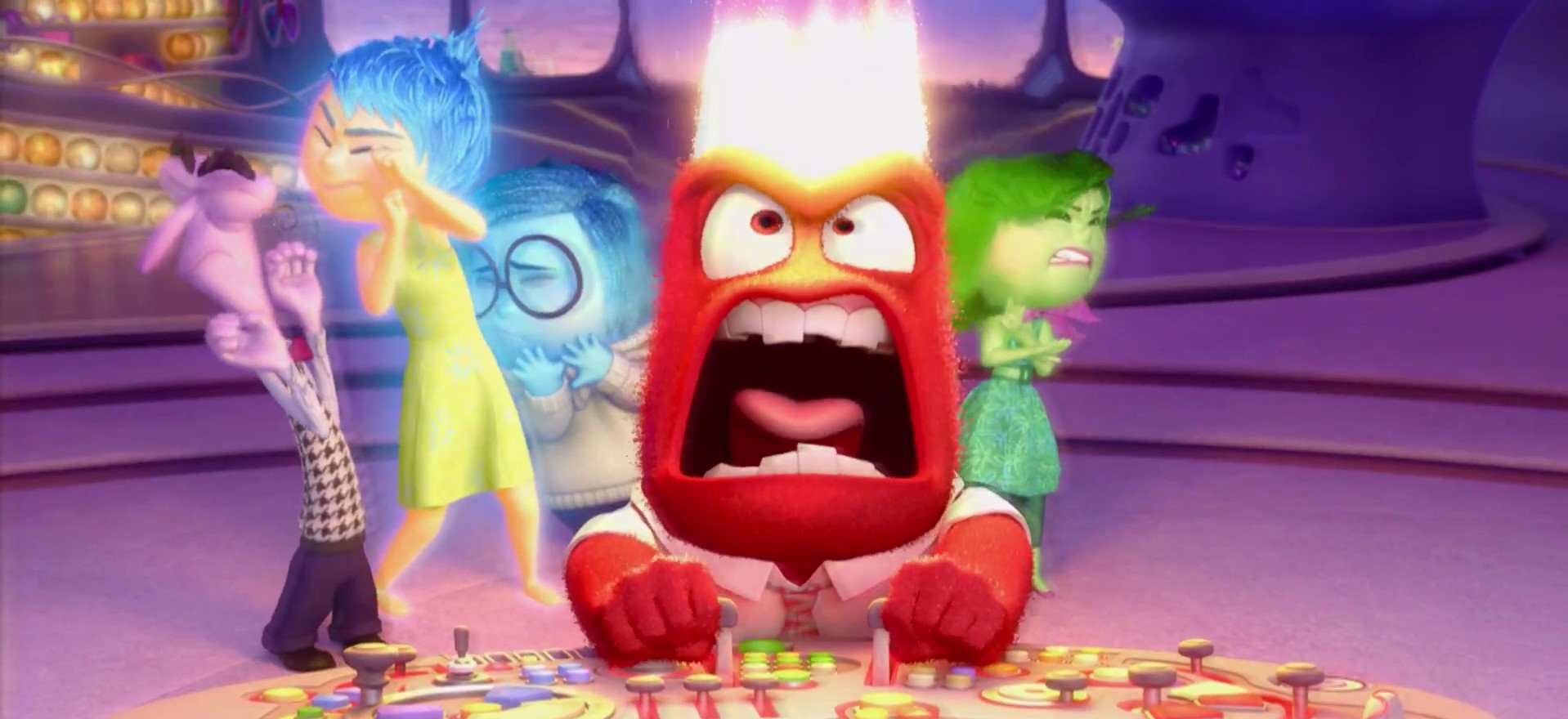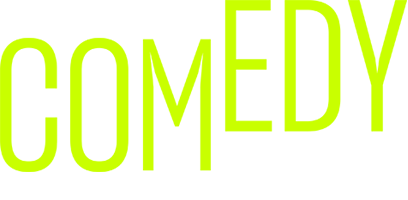Field Trips


The National Comedy Center offers unprecedented opportunities for students of all ages to encounter comedy’s great minds and unique voices in ways that engage, inspire, and educate.
As they explore 37,000 square feet of interactive and open-plan creative space, students will be immersed in multisensory, hands-on, and personalized learning environments developed by the Center’s award-winning curatorial and design team.
The galleries take students on an interactive journey through comedy history, from early vaudeville to the latest viral memes, and are designed to promote individual discovery, spark curiosity, and celebrate self-expression. The cutting-edge exhibits offer accessible entry points for learners of all styles and levels. Throughout their personalized experience, students gain a profound appreciation for comedy icons and innovators, as well as for the tremendous influence of humor on how we think, live and laugh.
Museum exhibits underscore a broad range of common classroom learning objectives, ranging from basic analysis and evaluation of artworks to comprehension of complex social, cultural, and political themes. The experience fosters creativity and dialogue, inviting students to create their own artistic expressions, and to practice skills like media literacy, civic engagement, and critical analysis.
All field trips include an orientation and day-long gallery access facilitated by a National Comedy Center docent.
Educational programs are an optional add-on to your visit. These 15-minute lively, discussion-based sessions center specific topics in comedy as they align with age-appropriate New York State learning objectives. Programs are linked to in-gallery exploration activities that can be completed during the docent-facilitated portion of your field trip. Program offerings are listed below.

PLANNING YOUR FIELD TRIP

For the most flexible booking options, we recommend that field trips be scheduled at least two weeks in advance. Bookings are available every day within the hours of 9am and 5pm, excepting holiday closures.
A trip duration of two to three hours is recommended for most groups, and we recommend that group size should not exceed 60. Larger groups should arrange for staggered arrival times.
Students must be supervised at a 10:1 student-chaperone ratio at all times and must adhere to the National Comedy Center’s Code of Conduct.
Please direct college group inquiries to the Student Groups Department so that your advanced educational needs can be addressed.
PRICING & BILLING
Field trip admissions are billed per student and vary dependent on grade level, class size, and zip code.
One required chaperone for every ten students is admitted free. Additional chaperones are billed at the student admission rate.
Membership benefits and other passes are not valid for field trip admission.
Advance payment is preferred. However, we will accept a PO confirming that teachers have initiated the payment process before their field trip date.
In the event of a cancellation, please contact the Student Groups Department as soon as possible, and no later than 24 hours before your booking. We are happy to work together to reschedule. If your group does not show up for a scheduled booking, you will be charged for the trip.
Your student group may be eligible for a scholarship. Contact the Student Groups Department to learn more!
FIELD TRIP FAQ

Lunches
Outside food and beverages are permitted for field trip groups and spaces for enjoying your lunch break will be provided. We cannot offer on-site refrigeration, though groups are welcome to provide their own coolers.
Boxed lunches can be catered for an additional fee upon request.
Beverages and snacks are available in the museum gift shop.
Beverages (including water bottles) are not permitted in the galleries and must be stored with bag lunches until mealtime.
Personal Belongings
Please leave all backpacks, large coats, and other items on the bus or in the classroom.
Parking
School buses should unload directly in front of the National Comedy Center’s main entrance at 203 W. 2nd St., near its intersection with Washington Street.
After unloading, buses can circle the block and park in the loading zone in front of the gift shop near Jefferson St. A bus driver rest area is available inside the gift shop, including concessions and café seating.
Free parking for chaperones is available in a nearby lot at 45 W. 2nd St.
Accessibility
The National Comedy Center welcomes students of all abilities.
All levels of the museum, as well as outdoor spaces, are accessible by ramp and elevator. An accessible parking lot is available at the west end of the museum, near Jefferson St. and W. 2nd St.
Wheelchairs are available free of charge on a first-come, first-serve basis in the lobby.
Single user, family, and all gender restrooms are located in the lobby and gift shop.
Resources for vision- and hearing-impaired students are available upon request. All video media in the museum is open captioned, and audio transcripts are available.
Service animals are welcomed at the National Comedy Center.

ADD-ON PROGRAMS
CARTOONISTS AT WORK
Recommended age groups: Grades 3-8 | Pairs well with: Big Screen Animation
Classic comic strips such as Peanuts and Marmaduke carry an appeal that has spanned generations. In this module, you will learn how cartoonists find creative solutions to the limited size and scale of the comic strip format, and that the best artists weave a clear point of view with a unique sense of humor. No matter what stories they tell, great cartoonists elevate a few panels of printed illustration into hilarious and enduring works of art.



Featuring Pixar Chief Creative Officer Pete Docter and New Yorker cartoonist Matt Diffee
SOUNDS FUNNY!
Recommended age groups: Grades 3-8 | Pairs well with: Big Screen Animation
Sound effects – like the squish of a pie meeting a face – are an integral part of comedy; yet, the art of sound design remains a mysterious process to many, as it occurs behind the closed doors of recording studios. In this module, learn about Foley artists, named after sound pioneer Jack Foley, and how they re-create the sounds of everything from stealthy footsteps to pratfalls, perfectly syncing their timing with images on the movie or TV screen.



Featuring Warner Brothers Foley artist Alyson Moore
STAND-UP HISTORY
Recommended age groups: Grades 9-12 | Pairs well with: Building a Joke
In this module, groups will learn about the emergence of stand-up comedy on the vaudeville stage when performers succeeded in getting laughs simply by talking – without relying on pratfalls or props. The genre was revolutionized in the mid-1950s by artists who approached their work with a no-holds-barred authenticity, influencing up-and-coming countercultural comics through the 1960s. By the 1970s and 80s, stand-up comedians were akin to rock stars. In the era of Netflix, YouTube, and podcasts, the genre has become more accessible than ever.



Featuring stand-up comedians like Margaret Cho, Lewis Black, Sebastian Maniscalco, Robert Klein, and Janeane Garofalo
BIG SCREEN ANIMATION
Recommended age groups: Grades 3-8 | Pairs well with: Sounds Funny! / Cartoonists at Work
Animated comedy films have been a mainstay of American cinema since the turn of the twentieth century, evolving to meet the tenor of the times. From Mickey Mouse’s debut in Steamboat Willie to DreamWorks’ Shrek, explore the invention and evolution of the animated comedies that have entertained audiences for generations.



Featuring award-winning comedians and voice actors like Gabriel Iglesias and Billy Crystal, and Academy Award-winning writer/director Brad Bird
BUILDING A JOKE
Recommended age groups: Grades 9-12 | Pairs well with: Stand-Up History
A great joke is like a magic trick: When executed well, it seems natural and easy…but behind the delivery there’s a well-honed craft. Learn from Jeff Foxworthy and Jim Gaffigan as they describe the genesis of their favorite jokes, and then deconstruct their creative processes. As they show, the core of every joke involves the careful build-up and release of tension.



Featuring stand-up comedians Jeff Foxworthy and Jim Gaffigan
SPOTLIGHT ON GEORGE CARLIN: WORDS
Recommended age groups: Grades 11-12 | Pairs well with: Stand-Up History
From an early age, George Carlin was attentive to the rhythms and meanings of words. This lifelong fascination with language became a cornerstone of Carlin’s work, which assumed a form that was not unlike spoken word poetry. This module dives into Carlin’s treatment of language, which ranged from silliness to high intellectualism and introduced a new type of rigor and precision into the realm of stand-up comedy performance.



Featuring comedians Judd Apatow, Whitney Cummings, Richard Lewis, Lewis Black, and Paul Feig
MUSEUM CAREERS
Recommended age groups: Grades 11-12
Learn about the work that makes the National Comedy Center operate and a variety of potential careers in the museum field—from information technology, marketing, and exhibit design to business management, archival preservation, and hospitality. Contact the Student Groups Department to arrange a behind the scenes look at careers in the museum sector.
For more information on field trips, contact the Student Groups Department at [email protected]





